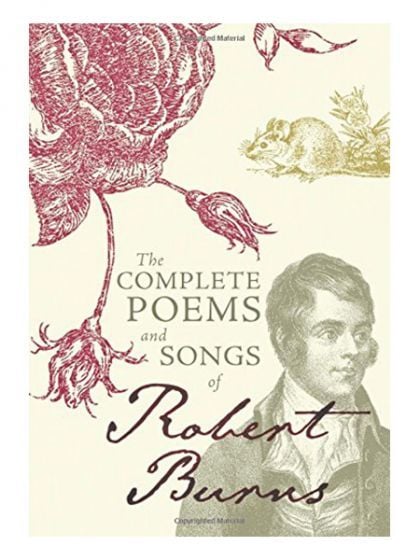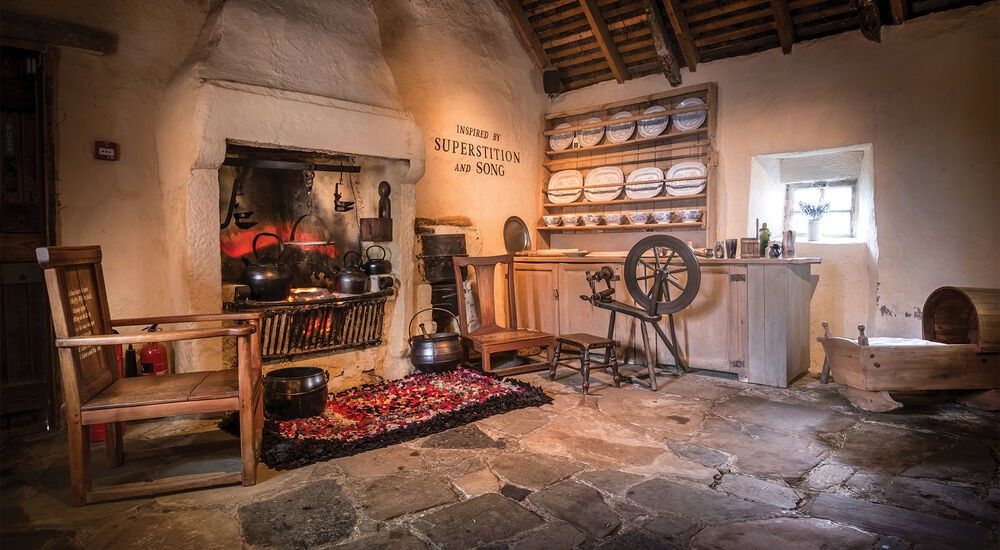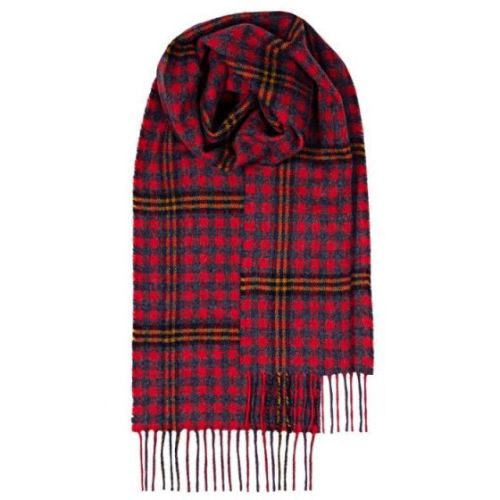The 25th January is Burns Night!
Posted on
Robert Burns was born on 25 January 1759 in Alloway, Ayreshire, in Scotland. He died in 1796 on 21st July in Dumfries, Dumfriesshire. Burns was the national poet – the National Bard - of Scotland.
And five years after his death in 1801, nine of his close friends got together on the anniversary of his death (21 July) to remember Robert Burns. At the first Burns supper, Burns’s friends raised a glasses to their great friend and they quoted some of his work and sang some of his songs. The menu consisted of haggis and sheep’s head. And so started the first Burns supper!

The Complete Poems and Songs of Robert Burns
is available from the National Trust for Scotland's shop
for £6.99
The nine friends met at Burns Cottage in Alloway. It was a cosy place, and Burns was born there and lived in it until he was 7. He shared a tiny box bed with 3 of his siblings. The family lived side by side with their farm animals. They ate their meals in the kitchen, read by the fire and received their early schooling there. Life was very demanding physically – Robert wrote poetry as a way of escape. By his mid-20s, he was accomplished in writing verse, and his work often reflected his political views. He had huge talent for satire, and his work showed wit, bawdy humour, and compassion and feelings for others. His poems showed acute insight into the behaviour of people; he had strong political views and these were often reflected in his work. He wrote about love, hardship, nature and family.

You can visit the Burns Cottage and the Museum
to discover more about Burns' life and works
Members of the National Trust for Scotland can visit for free.
You can visit the cottage and the museum - the latter has over 5,000 Burns artefacts. These include his handwritten manuscripts. The museum bursts into life every hour with an andio-visual extravaganza of Burns’ poems and songs. It’s got many of Burns’ most famous works in book and manuscript form, and some of the greatest treasures include the Kilmanock Edition of his first published collection, Poems, Chiefly in the Scottish Dialect, and William Burnes’s Bible – that records the date of Burns’ birth.
Take a look at the personal items – there’s a lock of Burns’ hair, for example – and his portable writing kit. For wannabe writers, you’ll just want to get home and start writing! Admission is free for members of the National Trust for Scotland
And the café usually has a haggis dish for you to try! Burns did write a poem “To a Haggis”, after all! Or why not try the recipe of haggis and cheese scones to celebrate Burns Night, or other scone recipes?
Two of Burns' most famous works include “Auld Lang Syne” which celebrates the joy of reunion and sharing memories amongst friends. The song is sung around the world to welcome in the new year.
The Red Red Rose was first published in 1794 and it was the form of a ballad. It tells of the speaker’s deep love for his or her beloved and promises that this love will stay fresh and constant forever, that it will last longer than human life.
O my Luve is like a red, red rose
That’s newly sprung in June;
O my Luve is like the melody
That’s sweetly played in tune.

This Red Red Rose Tartan Lambswool Scarf
is available from the National Trust for Scotland for £27.00
The Red Red Rose is a celebratory tartan,
marking the occasion of Robert Burns Night
Visit the National Trust for Scotland here to find out about the wonderful heritage of Scotland.
